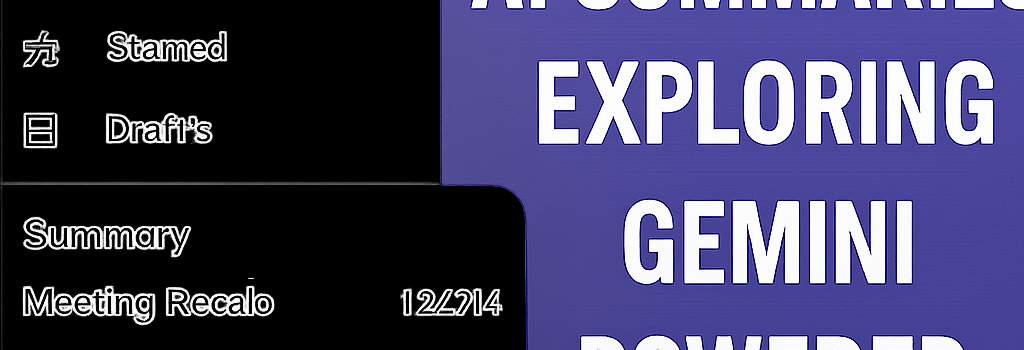Gmail’s AI Summaries: Exploring Gemini-Powered Insights

Introduction
As generative AI cements its role in everyday productivity tools, Google has taken the next step by enabling automatic AI-generated summaries in the Gmail mobile app. Previously an on-demand feature, Gmail now proactively surfaces concise overviews for longer emails and multi-message threads, powered by Google’s Gemini large language model (LLM).
How It Works
Under the hood, Gmail leverages Gemini 1.5 (≈150 billion parameters) hosted on Google Cloud’s TPU v4 pods. The summarization pipeline consists of:
- Preprocessing: Tokenization, thread flattening, and noise filtering.
- Trigger heuristics: Messages above ~200 words or threads exceeding 3 replies.
- LLM inference: Generating 3–5 bullet points with an average latency of 300 ms (p95).
- Postprocessing: Deduplication, fact-checking via Knowledge Graph grounding, and formatting.
Technical Deep Dive
Generative summarization in Gmail rests on the transformer architecture first described in Vaswani et al. (2017). However, Google’s latest optimizations include:
- Adaptive Context Window: Dynamically adjusts attention span to process entire threads up to 8,192 tokens.
- Mixed-Precision Inference: Uses bfloat16 arithmetic to reduce memory footprint by 30% without sacrificing output quality.
- Cache Reuse: Caches embeddings for repeated content in thread replies to cut inference time by up to 40%.
Performance Metrics and Benchmarks
Internal tests at Google report:
“We achieve an average summarization ratio of 8:1—compressing 800 words into 100-word summaries—with a ROUGE-L score above 0.72, ensuring high semantic fidelity.”
— Dr. Lily Tran, Google AI Research Lead
Privacy and Compliance Implications
Automatic AI processing raises privacy questions, especially under GDPR and CCPA. Gmail’s implementation addresses these concerns by:
- Encrypting emails in transit and at rest with AES-256.
- Processing summaries in regional data centers, ensuring data residency.
- Providing admins transparency reports via the Google Workspace Admin console.
User Controls and Policy Implications
By default, Smart Features enable AI summaries for paid Workspace and Google AI Premium subscribers. Users and admins can toggle this:
- Open Gmail Settings > Account > Smart Features & Personalization.
- Uncheck Enable AI summaries.
Note: Disabling smart features also affects Smart Compose, Smart Reply, high-priority notifications, and nudges.
Expert Perspectives
“Automating summaries could significantly reduce cognitive load for knowledge workers, but it’s crucial to maintain user agency and transparency about AI decisions.”
— John Ramirez, Analyst at TechPolicy Watch
Future Outlook and Integration Roadmap
Google hints at expanding automatic summaries to the web version of Gmail and integrating with Google Workspace AI across Docs and Calendar. Potential enhancements include:
- Multilingual summarization for non-English threads.
- On-device inference using TensorFlow Lite for offline support.
- Context-aware action suggestions (e.g., “Schedule meeting,” “Draft reply”).
Conclusion
Gmail’s shift to automatic AI summaries demonstrates Google’s bet on generative AI as a core productivity enhancer. While many users will appreciate the time savings, the rollout underscores the need for robust privacy controls and transparent AI governance.